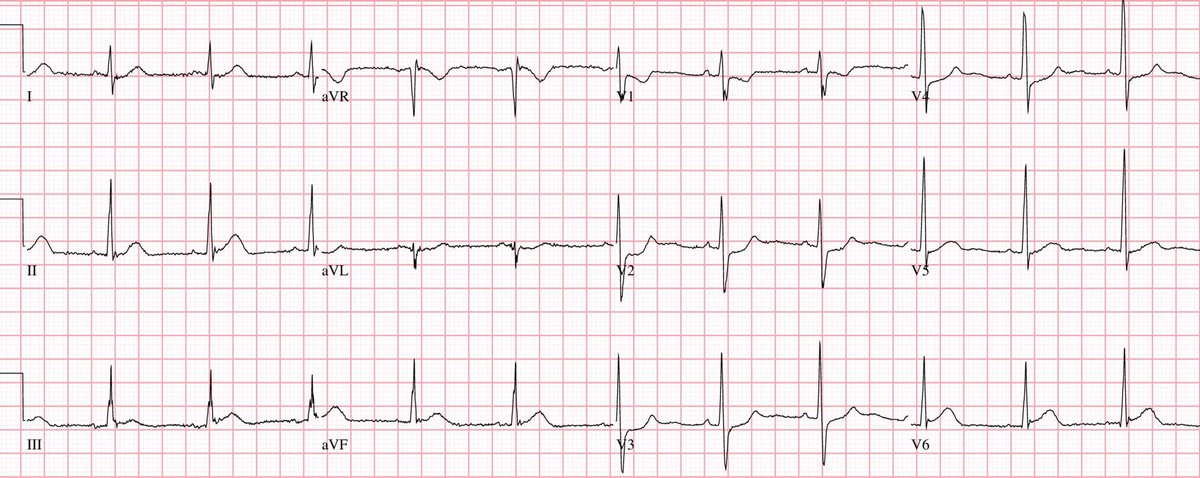
Here’s the #ECG of a 68 year old man who was rushed to the ER by paramedics
BP: 80/40
HR: 150
RR: 35
SPO2: 95%
What’s the diagnosis?
BP: 80/40
HR: 150
RR: 35
SPO2: 95%
What’s the diagnosis?

Answer: HYPERKALEMIA
There’s a wide complex tachycardia with RBBB morphology. There are features here concerning for several life-threatening diagnoses including: V-Tach, Pulmonary Embolism, Acute Coronary Occlusion. But ALL these changes resolved with empiric ↑K+ treatment…
There’s a wide complex tachycardia with RBBB morphology. There are features here concerning for several life-threatening diagnoses including: V-Tach, Pulmonary Embolism, Acute Coronary Occlusion. But ALL these changes resolved with empiric ↑K+ treatment…
The QRS width narrowed right before our eyes. His vital signs improved dramatically. This was the repeat ECG recorded just 20 minutes later. Lead V1 is artifact but otherwise you can see that all the extreme changes have now resolved, and only a hint of peaked T waves remain… 

K+ came back 7.9 mEq/L. Our patient got emergent dialysis and did amazing. This case just goes to show that ↑K+ truly is the Great Masquerader of the ECG. It’s one of those humbling diagnoses that no matter how many times you’ve seen it, it will come back to get you once again…
So ALWAYS remember to keep ↑K+ on your differential. And my advice is if you ever find yourself staring at an ECG thinking “WOW!” or wondering "WTF?", at least consider hyperkalemia. It can do just about anything.
#FOAMed
#FOAMed
• • •
Missing some Tweet in this thread? You can try to
force a refresh






